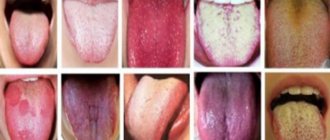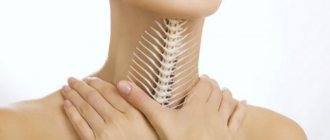When headaches and eye pain occur simultaneously, a person cannot always independently determine the cause and does not know which doctor to contact. Such a complex symptom can really cause difficulties, since it can occur both due to eye diseases and neuralgic disorders .
In any case, unpleasant sensations in the temples and eyes require examination by specialists, especially if they regularly make themselves felt.
Symptoms of pain in the eyes and temples
It is worth noting! Depending on the cause of the development of pain in the eyes and temples, this phenomenon may be accompanied by the following additional symptoms:
- a feeling of heaviness in the head generally or only in the temples;
- insomnia;
- constant fatigue, weakness, tiredness and apathy;
- dizziness;
- changes in blood pressure.
The symptom itself can have a different character and be pulsating, pressing or acute.
Headache and venous congestion
Venous stagnation (or disturbances of venous outflow from the cranial cavity) is a syndrome that often occurs with headaches of various types. Unfortunately, it is a common situation when venous outflow disorders are not taken into account in the treatment of tension headaches and migraines; as a result, patients suffer for years.
Even though venous outflow disorders are often described during head studies (MRI, vascular ultrasound), they are practically not taken into account in combination with other signs and complaints of the patient.
Manifestations of venous stagnation
Venous pressure inside the cranial cavity normally changes constantly - it increases with straining, coughing, sneezing, and decreases with rest. If venous outflow becomes difficult, characteristic complaints may appear:
- Heaviness in the head and pain in the morning.
- Swelling of the face (especially the eyelids) after sleep.
- Bursting headache.
Disturbances of venous outflow and nature of pain
Disturbances in venous outflow can change the nature of pain in patients with tension-type headaches. For example, pressing pain in the temples is accompanied by heaviness in the head after sleep.
There are even situations when disturbances in venous outflow are the main and only cause of headaches, and tension headaches come later.
The situation is no easier for migraine patients. In addition to the migraine itself, many also experience tension in the neck muscles and impaired venous outflow. In such patients, headaches almost never stop.
In practice, it turns out that an incorrect diagnosis (without taking into account venous outflow disorders) leads to long-term and ineffective treatment of headaches.
Difficulties in diagnosis
How can a doctor suspect the presence of a “venous factor”? After all, as we see, complaints with venous stagnation are not so specific. Only on the basis of symptoms such as swelling of the face and heaviness in the head in the morning, a correct diagnosis cannot be made.
The patient should be asked about changes in pain patterns and headache frequency. Since the tone of the veins can change with changes in atmospheric pressure, weather or cycle phase in women, all this must be taken into account.
Venous congestion can be confirmed using the following methods:
– Consultation with an ophthalmologist - dilated veins will be visible in the fundus. – Ultrasound examination of blood vessels - a decrease in the speed of blood flow through the veins will be noted. – Magnetic resonance imaging in phlebographic mode - dilated venous sinuses and veins will be noticeable.
However, the conclusion “impaired venous outflow” in itself does not carry much value - what is more important is the full clinical picture with the specifics of your complaints.
How to treat?
With regard to drugs for disrupting venous outflow from the cranial cavity, the situation is complex. There are currently no effective drugs with proven action against veins inside the skull. In practice, vascular drugs (for example, Cavinton) and metabolic drugs (Mexidol) are often prescribed, which may cause some improvement (although their effect has not been proven). Sometimes venotonics (for example, Detralex) are prescribed with a positive effect
Among other methods of treating headaches with impaired venous outflow, the methods of manual therapy, massage, and physiotherapy (if there is tension in the neck muscles or the effect of osteochondrosis on the blood vessels) have proven themselves to work well in practice.
Timely detection of venous outflow disorders and consultation with a neurologist can protect against progression and chronicity of pain.
Be healthy!
Maria Meshcherina
Photo istockphoto.com
Causes
Such signs always refer to the head, and they only radiate to the eyes, although in case of infectious lesions (this is one of the causes of the symptom), pain in the eyes and temples has the same origin.
The following are the main reasons for this violation:
- Migraine . Pathology of a neurological nature, the origin of which cannot always be determined. A distinctive feature of the symptom is spontaneous attacks, sometimes occurring for no apparent reason. The pain is throbbing and can spread from the temples to one or both halves of the head. Treatment is prescribed after diagnosis and is carried out according to an individual scheme.
- Problems with intracranial or blood pressure . Aches in the eyes and temples are always accompanied by fatigue and apathy.
- Trigeminal neuralgia . It occurs as a result of inflammatory or infectious diseases and has a sharp pulsating character. In complex cases and with developing complications, treatment is prescribed in a hospital setting. The disorder cannot be treated with symptomatic medications: the underlying disease must be eliminated.
- Osteochondrosis. With this disease, the blood supply to the brain is disrupted, since the problem affects the cervical spine, reducing circulatory activity. Unpleasant sensations begin in the back of the head and over time radiate to the temples and move to the eye area.
- Glaucoma. The only disorder in which the main affected area is the eyes, and the aches spread to the temples from them. Since this disease can be accompanied by clouding of consciousness, nausea and weakness. In the first stages, in the absence of visual disturbances, it is confused with poisoning, which is also accompanied by pain in the eyes and head.
- Sarcoidosis. This pathology affects the lungs, but can affect many other body systems, including the organs of vision. Additional signs in addition to pain are redness of the eyes. Spasms occur from the nervous system, which leads to aching in the head.
- Temporal arteritis. Damage to the temporal arteries, most often occurring in old age due to structural changes in the vessels. In such cases, the pain is concentrated in the temporal region and may not always radiate to the eyes.
- Malignant or benign tumors in the eye orbit or in the brain . In the first case, everything is clear - destructive processes also cause painful sensations. If we talk about benign formations, they may not always manifest themselves in the form of pain, and the nature of the unpleasant sensations depends on their type. So, with neuromas, the pain is concentrated in the eye area, and with hemangiomas, the patient feels pain in the temples.
- Cluster violations . They most often do not have their own causes and are of a burning, sharp nature, which is sometimes difficult to associate with any external or internal factors. The main location is the temporal region on the left or right side. The pain goes only to the eye located on the same side.
- Pregnancy. During this period, aches in the temples are associated either with hormonal changes or (in later stages) with weight gain, which is not typical for slender women in their normal state and requires the expenditure of a large amount of the body's resources, hence the load on the circulatory system and blood supply disorders.
Important! Such pain can also occur in weather-dependent people when the weather changes, but specialists are not able to fully treat this condition and are ready to offer such patients only painkillers.
Migraine symptoms
The first symptom of migraine is the so-called migraine aura. This is not a mandatory symptom, but according to statistics, it occurs in more than 30% of patients. A migraine aura can manifest itself as:
- Visual disturbances - circles, zigzags, blind spots before the eyes;
- Hearing disorders - tinnitus, slight loss of coordination;
- Olfactory disturbances - a sharp increase in the sense of smell, a feeling of an obsessive smell nearby;
- Tactile disturbances - pain or increased sensitivity of the skin, goosebumps, numbness in the face or limbs.
Some patients feel a migraine in advance - they experience weakness, irritability, tearfulness, increased appetite or complete loss of appetite.
Subsequent symptoms of an already occurring migraine:
- Severe, sometimes simply unbearable headache in one side of the head (usually the right). If you concentrate, you will be able to clearly feel the source of pain. It can last from several hours to 3 days.
- Nausea, abdominal discomfort, sometimes vomiting. Complete lack of appetite.
- Photophobia. Even dim light can increase pain or cause discomfort.
- Sound phobia. During a migraine, even a whisper nearby can be painful.
- Weakness. The stronger the pain increases, the stronger the feeling of weakness. During a severe attack, fainting may occur.
Patients with migraine are advised not to wait for an attack to develop, but to stop it in a timely manner. If possible, at the aura stage or the first signals of a developing migraine.
Features of pain localization
Most often, pain in the temples and eyes spreads symmetrically to both halves , but sometimes the pain syndrome affects only the left or right side of the head and the organ of vision on the corresponding side.
Pain on the left may indicate an impending stroke , but mostly this happens after it.
In such people, pain in the left temple, radiating to the eye, may continue for the rest of their lives.
The side of localization may depend on the side of the trigeminal nerve lesion, as well as on the location of the tumors.
If the tumor is strongly displaced from the center to the left or right side, then it is on this side that the pain will be felt more clearly.
Why does toothache radiate to the temple?
The degree of damage to soft and hard tissues varies. Sometimes only the enamel is affected, but more often than not, the pathology spreads to the nerve endings. It happens that diseases of the oral cavity affect the jaw joint; the temporal region and the brain suffer from abnormalities. The most common reason:
- Development of carious cavities. The process occurs against the background of a deficiency of useful minerals in the composition of crowns. First, the enamel is destroyed, and then the unit itself.
- Tooth pulpitis is an inflammation that affects soft tissue, that is, the pulp. The disease is caused by bacteria that penetrate the damaged chewing organ. Acute pain appears with the hypertrophic or gangrenous type of the disease.
- Exposure of dentin when the gum pulls away from the hard tissue.
- Crown cracks affect not only tissues, but also nerves. The pain goes in different directions.
- Improper filling, which allows infection to penetrate inside the tooth.
- Periodontitis, which affects dentin tissue, as well as osteomyelitis, an inflammatory process of the jaw bone with suppuration.
- The growth or defeat of eights gives unpleasant sensations. At the same time, the tooth hurts and radiates to the temple and ear, swelling appears on the gums, and pulsation is felt.
- Malocclusion, when the fangs are poorly positioned, the joints close incorrectly, and discomfort is felt in the temporal part of the head. Also, the reason may be wearing braces or removable dentures, which put pressure on the crowns.
The problem is not always related to the oral cavity. For example, pain is caused by irritation of the trigeminal nerve, especially its 2 or 3 branches. It happens that the clinical picture of some diseases overlaps with others, for example, infectious diseases of the ears. Inflammatory processes can affect masticatory organs with removed nerves. In such a situation, the patient complains that the pain spreads to the entire oral cavity. After all, all systems in the body are interconnected. Injury to one causes discomfort in neighboring organs.
Should I see a doctor?
Note! If such a symptom appeared for the first time, it was managed to stop with the help of an anesthetic and it does not appear again - there is no reason to worry.
But if pain attacks recur regularly and intensify, you need to visit a therapist.
He prescribes diagnostics , which usually includes urine and blood tests, MRI and CT, angiography of cerebral vessels, and then refers the patient to an ophthalmologist or neurologist (depending on what assumptions about the diagnosis arise).
What are the ways to relieve pain?
For pain in the temples and head, professional (often complex) treatment is required, which can be prescribed by a therapist or a highly specialized specialist .
But on the part of the patient himself, symptomatic therapy is allowed, and first of all, this is taking painkillers , from which you can choose the following:
- aspirin;
- ibuprofen;
- paracetamol;
- triptan;
- spasmalgon.
If the patient is aware of problems with blood pressure or this is revealed during the examination, pressure stabilizers (enam, renitec, captopril) can be additionally used .
Need to know! Sometimes the necessary medications are not at hand - in such cases, the person himself is able to provide emergency assistance to himself, eliminating the pain or reducing its intensity.
If possible, apply a few drops of mint or eucalyptus essential oil or a warming agent (for example, finalgone) to the temples, rubbing such products with your fingers for several minutes.
At home, you can relieve pain by applying a cold compress made from a damp cloth to your forehead.
Additionally, you can drop a few drops of mint or rosemary oil or tea tree oil on it.
In the latter case, the compress should be additionally wrapped in cellophane, since tea tree extract can cause a chemical burn to the skin.
also drink black or green tea, adding a spoonful of honey , and also eat a handful of walnuts , adding a little honey and a piece of grated lemon with zest.
Stay up to date! The safest and most effective massage is that you can perform it yourself in several ways:
- Mentally drawing a line on your head from ear to ear, you need to determine its center. You need to press on this point for about two minutes with your index finger until pain appears in this place.
- After taking off your shoes and socks, you need to find your left and right feet and use your thumbs to alternately massage both feet for two minutes (during this time you need to make one hundred presses). This is a method of Chinese medicine, and despite the unobvious connection with headaches, this method helps many.
- Using the index fingers of both hands, you need to feel the small depressions on the outer corners of the eye (this is the area between the border of the orbital bone and the eyeball). To reduce pain, it is enough to perform several simultaneous presses on the left and right sides.
- There is a point above the nose, strictly in the middle between the eyes at the level of the eyebrows. You need to press on it with your index finger 20-30 times - and the pain will begin to subside.
Preventive measures
When a tooth hurts and radiates to the temple, a doctor will help. In order to prevent such a situation, you need to follow simple rules.
- Practice good oral hygiene. Brush chewing organs twice a day.
- Choose the right brush and toothpaste, rinse your mouth after eating, and use floss.
- Regularly visit the dentist for preventive examinations. Typically, they are recommended twice every 12 months. Come to the doctor even when nothing bothers you.
- If pain occurs, you should immediately consult a doctor. There is no need to wait for complications to appear.
Such simple care gives excellent results, improves the quality of life, and prevents dangerous diseases. Regular sanitation is the key to dental health. If you have persistent migraines that do not go away with therapy, you need to see a dentist for a diagnosis.








